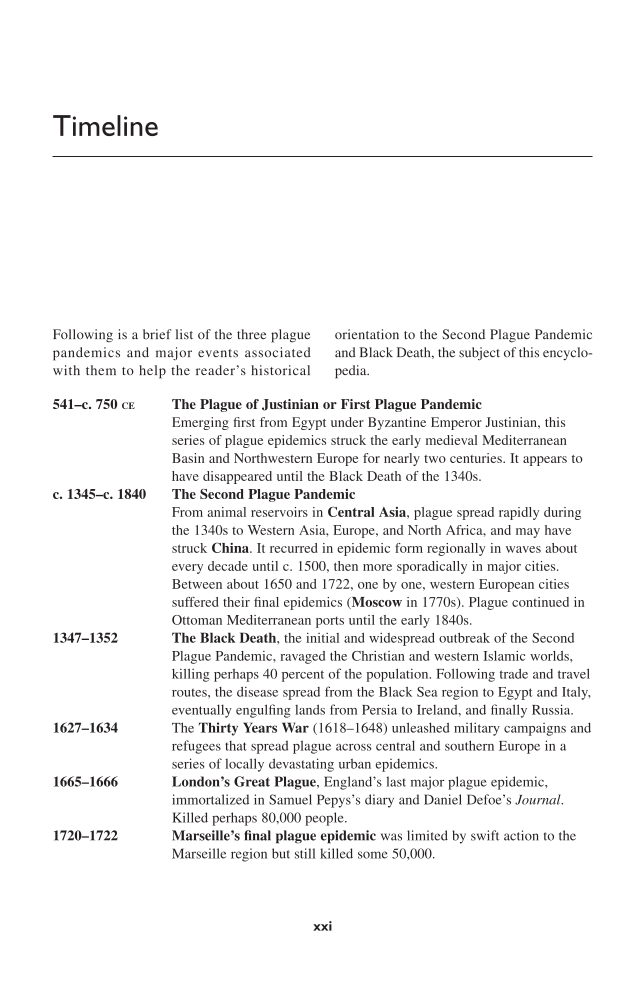Timeline Following is a brief list of the three plague pandemics and major events associated with them to help the reader’s historical orientation to the Second Plague Pandemic and Black Death, the subject of this encyclo- pedia. 541–c. 750 CE The Plague of Justinian or First Plague Pandemic Emerging first from Egypt under Byzantine Emperor Justinian, this series of plague epidemics struck the early medieval Mediterranean Basin and Northwestern Europe for nearly two centuries. It appears to have disappeared until the Black Death of the 1340s. c. 1345–c. 1840 The Second Plague Pandemic From animal reservoirs in Central Asia, plague spread rapidly during the 1340s to Western Asia, Europe, and North Africa, and may have struck China. It recurred in epidemic form regionally in waves about every decade until c. 1500, then more sporadically in major cities. Between about 1650 and 1722, one by one, western European cities suffered their final epidemics (Moscow in 1770s). Plague continued in Ottoman Mediterranean ports until the early 1840s. 1347–1352 The Black Death, the initial and widespread outbreak of the Second Plague Pandemic, ravaged the Christian and western Islamic worlds, killing perhaps 40 percent of the population. Following trade and travel routes, the disease spread from the Black Sea region to Egypt and Italy, eventually engulfing lands from Persia to Ireland, and finally Russia. 1627–1634 The Thirty Years War (1618–1648) unleashed military campaigns and refugees that spread plague across central and southern Europe in a series of locally devastating urban epidemics. 1665–1666 London’s Great Plague, England’s last major plague epidemic, immortalized in Samuel Pepys’s diary and Daniel Defoe’s Journal. Killed perhaps 80,000 people. 1720–1722 Marseille’s final plague epidemic was limited by swift action to the Marseille region but still killed some 50,000. xxi
Document Details My Account Print multiple pages
Print
You have printed 0 times in the last 24 hours.
Your print count will reset on at .
You may print 0 more time(s) before then.
You may print a maximum of 0 pages at a time.




































































































































































































































































































































































































































































